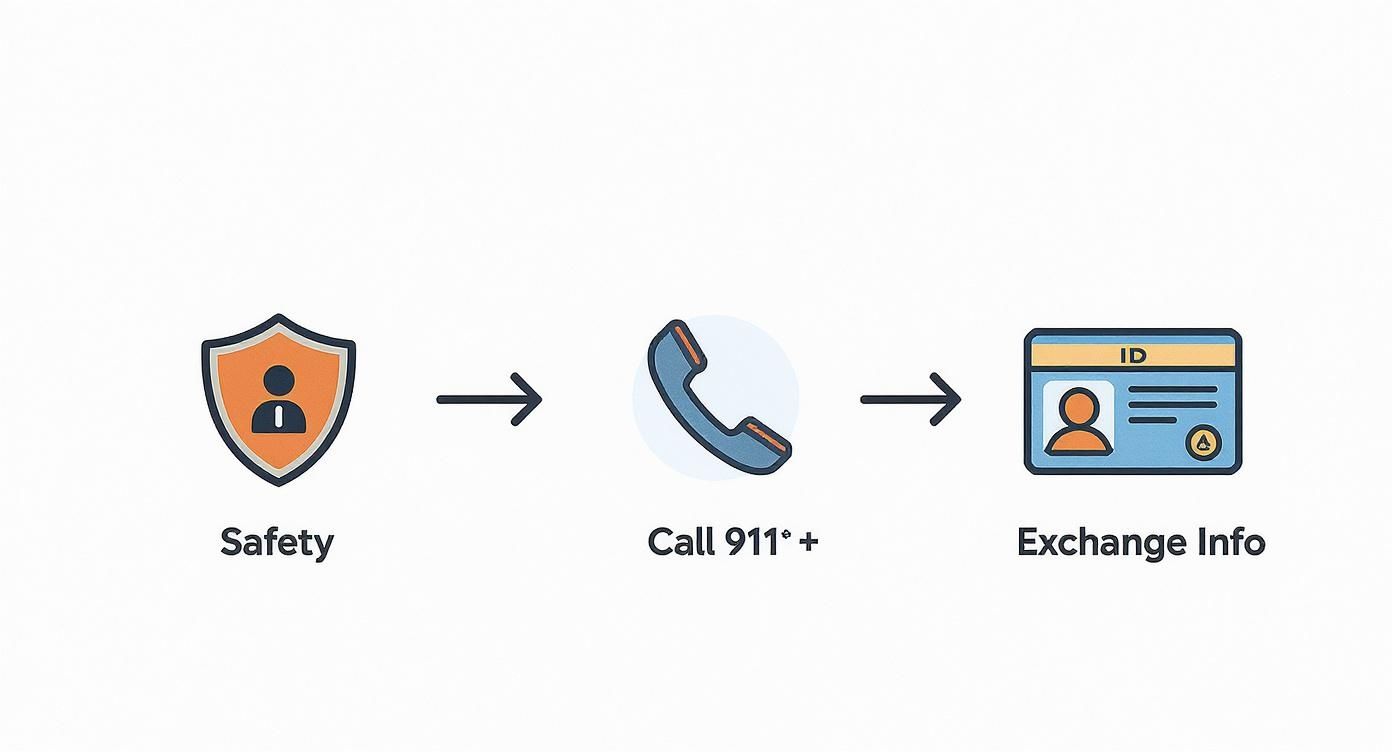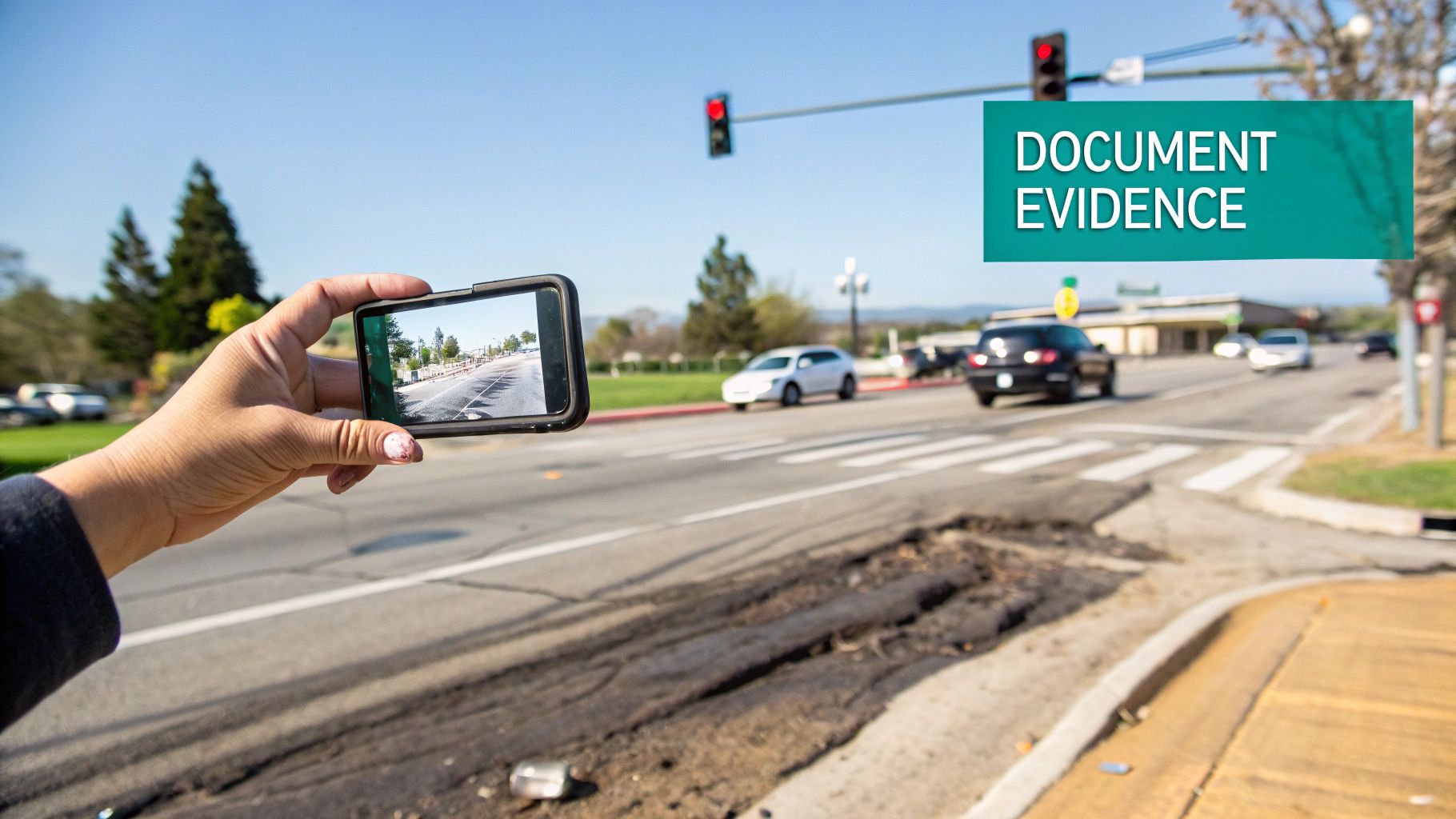Table of Contents
In the chaotic moments after a car accident, your client's first moves are critical. But for your personal injury firm, the challenge is just beginning. Inconsistent communication, missed follow-ups, and disorganized client updates can jeopardize a case and damage your firm's reputation. The key to managing this initial phase isn’t more staff—it’s a smarter, automated client communication workflow. This ensures every client feels supported and your team operates with calm efficiency, setting the stage for a successful claim.
The Challenge: Managing the Post-Accident Information Overload
The period immediately following a car crash is a blur of activity for your clients. They are dealing with medical appointments, insurance adjusters, and the stress of recovery. For your firm, this translates into a flood of inbound calls, emails, and repetitive questions. Your team is likely struggling to keep up, manually sending the same status updates and reminders, which leads to bottlenecks, inconsistent client experiences, and the risk of critical information slipping through the cracks. This reactive approach consumes valuable paralegal and attorney time that should be focused on building the case, not just managing communications.
Securing the Scene and Getting Help
The first 24 hours are crucial for your client. You need to ensure they've taken the right steps to protect their health and their claim. Have they seen a doctor? Did they get a police report? This initial guidance sets the tone for the entire case. A failure to systematically confirm these steps can weaken the foundation of the claim. Calling 911 is non-negotiable for clients. A police report is one of the most important pieces of evidence for an insurance claim or a lawsuit. Having law enforcement on the scene creates an official, unbiased record of what happened, which is invaluable. For a deeper dive on this, check out our guide on making an insurance claim without a police report.
This infographic breaks down those crucial first steps.

It’s a simple but powerful sequence: check on yourself and others, call for emergency help, and then get the necessary information. For your firm, automating reminders about these steps ensures clients don't miss them.
Exchanging Information—And What Not to Say
While your client is at the scene, they need to exchange basic information with the other driver. It’s your firm's job to guide them on what to say—and more importantly, what not to say.
Here’s the essential info your client needs to get:
- Driver's Information: Their full name, address, phone number, and driver's license number.
- Insurance Details: The name of their insurance company and the policy number.
- Vehicle Information: The car's make, model, color, and license plate number.
Crucial Tip: Automate an email or text to new clients reminding them never to apologize or admit fault. Phrases like "I didn't see you" or "I'm so sorry" can be used against them by an insurance adjuster later. Your systems should reinforce this critical advice from day one.
An automated workflow can send these instructions the moment a client signs with your firm, ensuring they are protected even before their first call with an attorney. This proactive guidance demonstrates your value and prevents case-damaging mistakes.
The Solution: An Automated Post-Accident Communication System

The solution isn't hiring more people to answer phones; it’s implementing an intelligent, automated communication framework. By systemizing your client outreach after a car accident, you create a consistent, professional experience that builds trust while freeing up your team for high-value legal work. This system acts as a digital paralegal, ensuring no client feels ignored and no critical step is missed. The proof you help your client collect at the scene—before cars are towed and the road is cleared—can become the bedrock of their insurance claim.
1. The Automated Welcome Sequence
The moment a client retains your firm, a pre-built workflow should trigger. This isn’t a generic email; it’s a multi-step sequence designed to educate and reassure.
- Day 1: An email introducing their legal team, setting expectations on communication frequency, and providing a link to a secure client portal. Include a checklist of immediate "to-dos" like "Photograph Your Injuries" and "Start a Pain Journal."
- Day 3: A text message checking in on their medical status and reminding them to forward all medical bills to the firm.
- Day 7: An automated email explaining the next steps in the legal process, demystifying terms like "subrogation" and "discovery."
This proactive outreach drastically reduces inbound "what's next?" calls and makes your clients feel cared for from the start.
2. Evidence Gathering Reminders
Don't leave evidence collection to chance. Use your case management system to create automated tasks and reminders for both your team and your client.
- Photo Shot List: Send an automated email with a checklist of necessary photos: wide shots of the scene, damage to all vehicles, skid marks, road conditions, and visible injuries.
- Witness Information: Trigger a task for your paralegal to follow up with any witnesses listed in the police report within 48 hours. Provide them with a link to a guide on how to properly document a statement. For more on what makes a strong statement, check out our guide on how to write a witness statement.
- Police Report Retrieval: Create an automated task for your intake specialist to request the official police report 72 hours after the accident.
| Evidence Type | What to Collect | Why It's Important |
|---|---|---|
| Photos & Videos | Wide shots, vehicle damage (all cars), skid marks, road conditions, visible injuries. | Creates an objective, visual record of the scene and prevents disputes over what happened. |
| Witness Info | Full names and phone numbers of anyone who saw the crash. A brief recorded statement. | Provides an unbiased, third-party account that can confirm your version of events. |
| Driver Details | Name, contact info, driver's license number, and insurance information from other driver. | Essential for filing an insurance claim and holding the at-fault party accountable. |
| Police Report | Officer's name, badge number, and the official police report number. | The official record of the incident, often containing a preliminary finding of fault. |
3. Milestone-Based Status Updates
Clients get anxious when they don't hear from their lawyer. Eradicate "radio silence" with automated updates tied to specific case milestones.
- Demand Letter Sent: When you mark the demand letter as "sent" in your system, an automated email goes to the client explaining what the letter is and the expected timeline for a response.
- Offer Received: When an offer is logged, a notification can be sent to the client letting them know and stating that their attorney will call them within 24 hours to discuss it.
- 30-Day Check-in: If no major milestone is hit within 30 days, a simple, automated "we're still working hard on your case" email maintains connection and manages expectations.
This system ensures clients feel informed and valued, turning them into referral sources rather than detractors. Accidents are still a serious problem on our roads. The National Highway Traffic Safety Administration (NHTSA) estimates that 17,140 people died in motor vehicle crashes in the first half of 2025. You can read more in the full NHTSA traffic fatality report.
Real-World Example: Automating the Client Journey

We worked with a mid-sized PI firm that was drowning in client communication tasks. Their two paralegals spent nearly half their day answering the same questions about medical bills and case status. The attorneys were constantly interrupted, and client satisfaction scores were dropping.
We implemented an automated workflow using their existing case management software. The results were transformative.
- Automated Intake: A welcome sequence was built to educate new clients on the process, provide essential legal warnings (like not speaking to adjusters), and introduce their case manager. This immediately cut inbound intake calls by 40%.
- Document Collection: Instead of manually chasing medical records, we set up automated email and text reminders for clients to submit their paperwork through a secure portal. This reduced the average time to get a complete medical file from 45 days to just 18.
- Milestone Updates: We configured their system to automatically notify clients when key milestones were reached—demand sent, offer received, deposition scheduled. This eliminated the "just checking in" calls and allowed paralegals to focus on drafting documents and preparing for litigation.
Within three months, the firm saved over 20 hours of administrative time per week, client satisfaction scores increased by 30%, and attorneys could focus entirely on strategy. This is the power of operational systems.
Crucial Takeaway: Your medical records are the official story of your client's injury and recovery. Automating the collection process ensures you build a strong evidentiary foundation faster and more efficiently.
The need for this documentation is a global reality. Every year, between 20 and 50 million people worldwide suffer non-fatal injuries from car accidents, as reported by the World Health Organization. Systemizing your firm's processes ensures you can handle this volume effectively.
Conclusion: Build a System for a Better Client Experience
Managing client communication after a car accident doesn’t have to be a chaotic, manual process. By implementing a thoughtful automation strategy, your firm can provide a superior client experience, reduce administrative overhead, and build a more scalable and profitable practice. You save time, your team is less stressed, and your clients feel supported every step of the way—a true win-win.
Start your free 20-minute automation audit and discover how to save hours every week without adding staff.
Written by
Conduit Law
Personal injury attorney at Conduit Law, dedicated to helping Colorado accident victims get the compensation they deserve.
Learn more about our team



